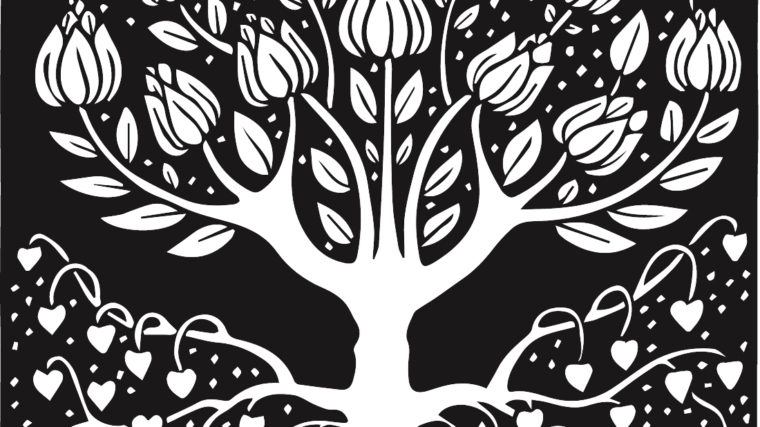Blue Cliff Record, Case 13
A monk asked Baling, “What is the school of Kanadeva?”
Baling said, “Piling up snow in a silver bowl.”
Background & Reflections
Baling Haojian, a monk of the Five Dynasty era (907-60), was an eccentric known for always carrying around a tattered sitting-cloth. He studied under Yunmen Wenyan and eventually succeeded to his dharma. In those days, at the time of his transmission, a student submitted a written exposition of his understanding. Baling submitted the following three questions or koans and their answers.“
What is the Way?
The master said, “A clear-eyed man falls into a well.”
***
“What is the Blown-hair Sword?” [1]
That master said, “Branches of coral support the moon.”
***
“What is the Tipo school?” [2]
The master said, “A silver bowl filled with snow.”
***
When Yunmen read Baling’s questions and answers he was very pleased. He said to Baling, “On the anniversary of my death, simply recite these Three Turning Phrases. That will suffice to repay my kindness.”
Thus was born the Three Turning Phrases of Baling. Eventually, they were used as a vehicle for transmission in the Yunmen school.
Not much else is known about Baling, except for his famous Three Turning Phrases. Besides always carrying about a tattered bowing-mat he was very talkative and was often chided for his big mouth by fellow monks and friends. There are several instances of this in encounters Baling had with the great Layman Pang.
In Secrets of the Blue Cliff Record, Hakuin says about the koan that the answer to the monk’s question is contained in the question itself.
A monk asked Baling, “What is the school of Kanadeva?”
So with a little stretching, the first word “What” could be taken to be the beginning of a list of questions which immediately can lead to a debate and thus, the teaching style of Kanadeva.
And so there may be a karmic connection with Kanadeva. For Kanadeva was famous for entering into highly charged debates with non-Buddhists, who were of course called “heretics.” He usually won the debates. And being the winner he held up a red flag as a sign of his success. Then the losers converted Buddhism. It is said he had many followers—most of them losers.
And then we have Baling’s response to the monk’s question. It may be that his response is an invitation to the student to debate.
“Piling up snow in a silver bowl.”
As you all know this phrase comes from the initial verses of Dongshan Liangjie’s “Song of the Jewel Mirror Awareness” which we chant during Service.
The teaching of thusness
Is intimately communicated
By Buddhas and ancestors;
Now you have it,
So keep it well.
Filling a silver bowl with snow,
Hiding a heron in the moonlight.
Dongshan preceded Baling by three generations. While we don’t have dates for Baling we have dates for Dongshan and Baling’s teacher, Yunmen. Dongshan died when Yunmen was four years old. And probably, his Jewel Mirror poem was quite well known.
I have always thought that the snow in the silver bowl, as well as the hidden heron in the moonlight, are symbols for emptiness. They are there and yet they are not there. Or they are not there and yet they are there. Like the self. The self is not the self and yet is the self. Both are true at the same time. Like the wave and the particle. And they are empty. And they are true because they are empty. And both being and not being is emptiness. Kirchner in the Kattoshu biographical notes of Baling, tells us that the Kanadeva school emphasized shunyata—or emptiness and the teachings of the Madhyamika school. And of course the father of Madhyamika is Kanadeva’s teacher, Nagarjuna.
The fifteenth ancestor was the Venerable Kanadeva. He had an audience with the Great Being, Nagarjuna, in the hope of becoming a follower. Nagarjuna knew he was a man of great wisdom. First, he sent his assistant for a bowl full of water and had it placed before him. The Venerable Kanadeva saw it and thrust a needle into the bowl of water and presented it to Nagarjuna. They met each other and joyfully realized that they were of like minds.
Keizan’s Verse
A needle fished up all the ocean water;
Wherever fierce dragons go,
it is hard to conceal themselves.
This is from Case 16 of the Dentoroku:
And all of this is packed in this seemingly simple exchange between a student and Baling. Seemingly simple, but this is probably one of the more difficult koans in koan study and so I’ll stop here.
A monk asked Baling, “What is the school of Kanadeva?”
Baling said, “Piling up snow in a silver bowl.”
[1] Chuimaojian: This is the name of a famous sword with a blade so sharp it could cut a hair blown against it. It symbolized the deep functioning of the Zen master in cutting off the delusions of the student.
[2] The Tipo school is the teaching of the fifteenth Indian Zen patriarch, Kanadeva; tipo is the Chinese transliteration. The school emphasized the shunyata, or emptiness, teachings of the Madhyamika school.



